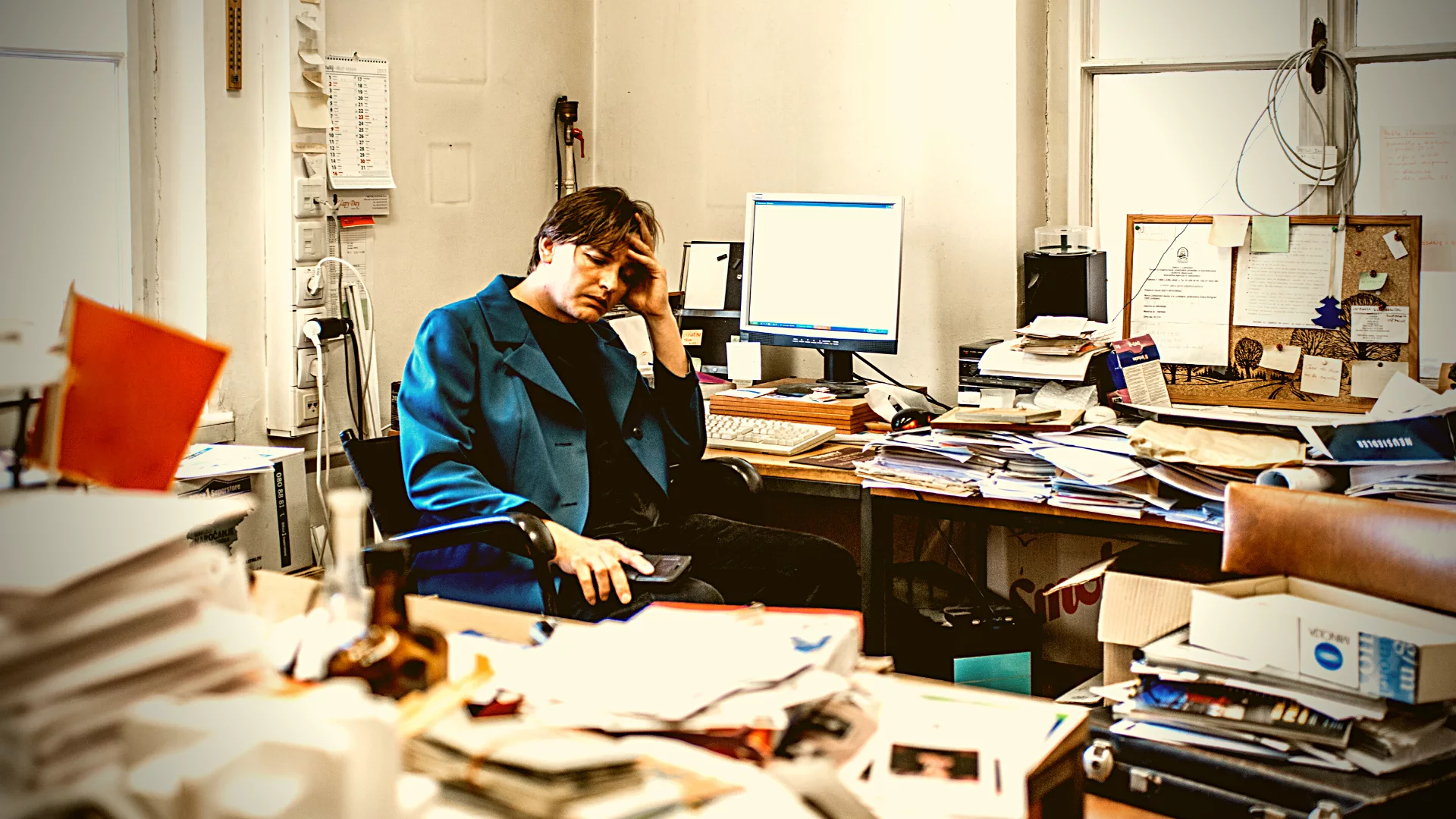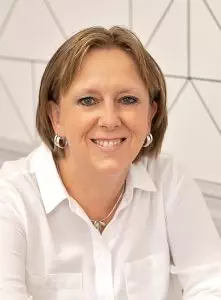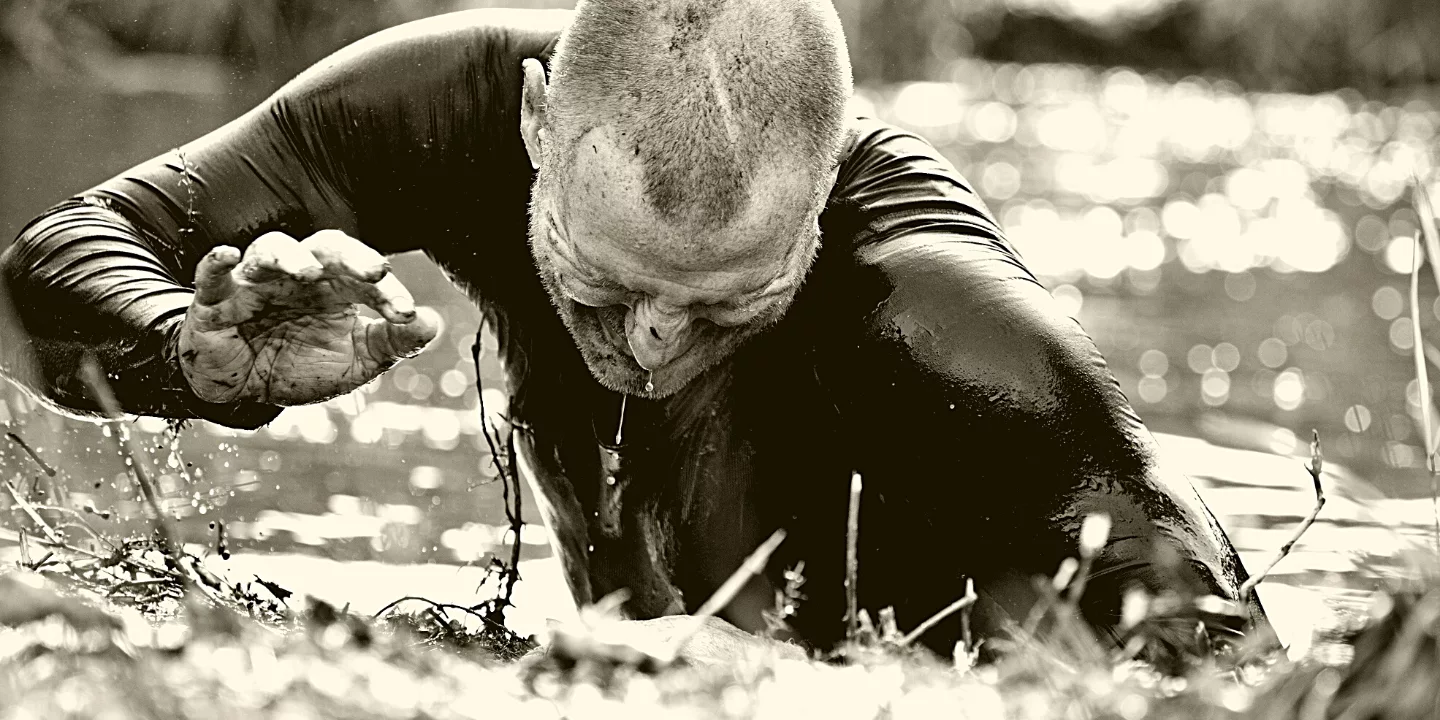leadership
Feeling overloaded? The solution might not be less work...
Feeling overloaded? The solution might not be less work...
By Karen Amos
I’ve just had a couple of interesting sessions with clients, exploring how to create capacity within their organisation and their life in general. Many of us know the feeling of being up to, if not over capacity and the stress, pressure and often anxiety this brings. It’s almost a fact of modern working life - that feeling there’s just no wriggle room and that you daren’t even think about what happens if one more thing goes wrong, or there’s a bout of sickness or a resignation.
I’m a coach not a magician, so I can’t manifest time that doesn’t exist – although it wouldn’t be a bad superpower would it? What I can do often feels a little magical though in the turn-around it brings people, but there’s no woo-woo involved – I simply help my clients find clarity.
Often when I start working with clients, particularly around any ‘Time Management’ type issues, they expect me to do the usual, ‘Prioritise your tasks… delegate…, etc., etc.’ There's very much a time and a place for these tools and I frequently use these along with other time management techniques, this usually isn’t my starting point.
The fact is that most time management issues stem from a mindset issue. This is a kind of good news/bad news situation though.
The bad news is that this means the root of the problem lies with how you view it, so no blaming other people for your problems. You know, the whole, 'My boss is so mean to me' routine. A bit harder to do when you're self-employed mind.
The good news is that simply changing how we think, can completely transform our situation.
When I work with my clients, we look at what’s going on… then look at what’s REALLY going on! That’s the key to coaching – getting right down to the root cause of the problem. We often find this too difficult to do on our own, as we’re viewing the world through a filter of our emotions, values, experiences and expectations. A good coach will help you work out exactly what your pressure points are and also your priority outcomes. (Hint – we often confuse activity with outcomes and these really, really are not the same thing!)
One of the questions I often ask my clients is:
What would change if you accept the fact there will always be too much to do in any given day/ week/ month/ year?
Along with:
What would you do differently if you believed your wellbeing and happiness was just as important as everyone else’s?
By asking these types of questions, I can bring a fresh pair of eyes for my clients, helping them make decisions and create the space they need to work on the stuff that really counts. So to paraphrase that paragon of Stoic philosophy, Marcus Aurelius, the difficulty is often not what's going on around us, but our response to this.
If you'd like to find out how our 1-to-1 coaching programmes can help you get 'unstuck' and move forward this year...
Call us: 07714 855757
or click HERE to book in a short, no-obligation chat
Karen Amos is an executive coach and founder of BrightBird Coaching & Training. She supports leaders and managers to get the best out of themselves and their teams. She brings a down-to-earth, practical approach to improving working lives through better leadership, communication and working relationships.
Wrestling the shark - getting to grips with the unknown...
Wrestling the shark – coaching questions to help you get to grips with the unknown…
By Karen Amos
I’ve just been reading an article about Great White Sharks in Scotland (Spoiler – there are some, but not many, so you’re more likely to die of hypothermia!). As it does, my mind went on a little meander, taking me back to watching the film Jaws for the first time as a kid. I wasn’t old enough to watch it at the cinema, but later watched when it aired on TV in 1981. The rest of my family was out and I remember my Mum asking if I really wanted to watch it on my own. She knew I wasn’t a fan of scary stuff, having been traumatised by the daleks and a pantomime of Beauty and the Beast years before. (I know, it’s not exactly the exorcist, but I’m a horror lightweight OK!)
The article vividly brought back the suspense in the lead up of the film. The tension, anxiety and fear. The glimpses, the terror of the characters and of course, the music. This was going to be horrific – should I be watching it alone?
Then we finally had the reveal and saw the shark in all its terrifying monstrousness… erm, no… I remember laughing out loud. Special effects weren’t exactly enhanced in those days and Steven Spielberg definitely got the hang of it later, but the sight of the obviously latex shark just took the scariness out of everything. From that point on I just buckled in for the ride and enjoyed the rest of the film as a bit of a comedy adventure.
This lead me on another little meander to think about how I use this technique in my coaching to help clients with change. No, I don’t make them swim with great whites (although perhaps there’s a business opportunity in there somewhere…), but the process is the same. Simply, that…
We fear what we can’t see.
Fear is disabling. We’re all familiar with the ‘fight or flight’ adrenaline response to danger, but there’s actually another, less well-quoted response that’s equally as powerful. That’s Freeze.
For this response, think rabbit in the headlights. The rabbit knows the danger is coming and even though it’s naturally built to flee, it just can’t get its muscles to move. We often have the same response in life and the causes and effects can be quite insidious. Usually the cause is nothing so obvious as a shark attack, or a car about to run us over – it’s the stuff lurking in our subconscious. It’s there, we’re largely unaware of it – but it’s controlling our every action, thought, emotion and decision.
This stuff includes fear – particularly fear of failure, or of being judged. Other things can be good old imposter syndrome, or a past negative experience that we subconsciously don’t want to repeat. The problem is that we’re often completely unaware on a conscious level of what’s actually going on and berate ourselves for not driving forward in the way we would like.
My wonderful coach supervisor has a phrase to sum this up perfectly…
‘Let’s identify it – let’s name it – then we can control it.’
If you find yourself procrastinating, or tinkering around the edges of a task or project, this could be the root cause. The fact is that once we name the thing that’s causing the problem, we find, just like with the latex shark, that it no longer has a hold over us. It’s common for my clients, once they’ve named the issue, to quickly and metaphorically roll up their sleeves and crack on with the task at hand as if there never was a problem.
So as usual, here are some coaching questions to break out of the freeze mode and identify and name what’s really going on.
- What is it about this task/issue that I find so difficult?
- What’s the part I really don’t want to do?
- What am I worried may happen if I do this?
- What are the risks for me here? (NB: risks can be personal/emotional as well as physical or financial)
- Can I relate this situation to something that’s happened to me before?
- What would I be embarrassed to admit about my approach to this?
- What’s ‘unseen’ or uncertain here?
- If there was one thing holding me back, what would it be?
It’s a fact that whilst coaching has a focus on action and goals, often the biggest part of the work is around the reality check of ‘What’s REALLY going on here’. The fears, anxieties and general horrible imaginings that hold us back from getting what we really want. Do remember that these are also questions you can use to help someone else who seems ‘stuck’ too, whether you’re a manager, a colleague, or just a friend.
If you’d like to find out how our 1-to-1 coaching programmes can help you get ‘unstuck’ and move forward this year..
Call us: 07714 855757
or click HERE to book in a short, no-obligation chat
Karen Amos is an executive coach and founder of BrightBird Coaching & Training. She supports leaders and managers to get the best out of themselves and their teams. She brings a down-to-earth, practical approach to improving working lives through better leadership, communication and working relationships.
Wrestling the shark - getting to grips with the unknown
Overwhelmed with work? Treat your to-do list as if you were going on holiday...
Overwhelmed with work? Treat your to-do list as if you were going on holiday...
By Karen Amos
Is your workload stressing you out right now?
If so, I’d say you’re in good company. So many people are saying they’ve too much to do and not enough time to do it in. On top of this, there’s the added pressure of the summer holidays. Of course, this is doubly significant for those working in education with end of term looming – but it also applies to anyone who has a break booked, but doubts whether they’ll make it in one piece due to the amount tasks they’re facing.
So before we look at what we can do to manage this, let’s do a quick reality check (Magic wands and wishful thinking are very nice, but some things are just fact – albeit slightly uncomfortable ones!).
FACT #1 – There will always be too much work and too many things to do in any given day, week, month, eternity…
FACT #2 – No matter how motivated, or how good your intentions are, you only have a finite amount of energy. (Sorry to be the bearer of bad news, but you are not a robot!)
FACT #3 – Much of the pressure we feel is artificially created. It comes from other people, or worse still ‘systems’ and cultures, that we leave unquestioned.
FACT #4 – The more tired and stressed you get, the more ineffective and unproductive you become.
OK, so that’s all the doom and gloom stuff, but does that mean we’re all destined for a life of unproductivity and angst? Absolutely not! And the good news is that so much more is in your control than you may believe.
This is why I believe we should take the ‘One week to my holidays’ approach to managing our workload…
So here’s how it usually goes over your last 5 working days:
Day 5 – You’re full of good intentions about how you will clear all those pesky jobs that have lurked on your to-do list all year. That way you can go on holiday with a clear conscience, self-congratulating at all the amazing work you’ve smashed this week…
Day 4 – You’ve tripled the length of said to-do list, but haven’t actually done a single thing, other than fire-fighting more tasks that weren’t even on there.
Day 3 – You realise that half of these tasks will take at least a week each, so decide to put them off until after your holidays (or even next year!).
Day 2 – You’ve ditched 80% of your original tasks and are now prioritising the the things that will cause disaster/mayhem/get you the sack if you don’t do them…
Final working day – You’re ditching tasks from that list with abandon (many of which will never find their way back onto it, even though you were convinced were non-negotiables three days ago). You’re becoming slightly delirious and demob-happy and start doing the bare bones of what’s needed and seem to have forgotten about your perfectionist tendencies after all…
Sound familiar? I know it well!
So if those tasks were so important in the first place, why do some become more negotiable/optional the more time-pressures exert themselves?
Usually it’s because they actually weren’t so important. They were wishes, they were unplanned and they were good intentions (and we all know what the road to hell is paved with…).
That’s why we should be grateful for that last-minute panic before our holidays. It helps us shine a light on what’s really important and also what our day is actually filled with.
Here are some coaching questions to help you see your workload in a new light:
1. Realistically, how long will these tasks take me with no distractions?
2. What would I advise the people I line manage if they presented me with this to-do list?
3. What needs to change in order to achieve the more strategic stuff, or the things that will make a difference?
4. What 3 things can I put in place quickly and easily to cut out distractions and fire-fighting?
5. Who are the key people around me who can help me with this?
Hopefully, you’re now able to give yourself permission to take a fresh view of that never-ending to-do list and have a wonderful, restorative holiday!
If you’d like to find out more about our training courses and programmes on time-management, work-life balance and wellbeing please get in touch. We also offer individual and team coaching on leadership and performance matters.
Call us: 07714 855757
or click HERE to book in a short, no-obligation chat
Karen Amos is an executive coach and founder of BrightBird Coaching & Training. She supports leaders and managers to get the best out of themselves and their teams. She brings a down-to-earth, practical approach to improving working lives through better leadership, communication and working relationships.
Tired of playing the bad guy? Why not play yourself instead....?
By Karen Amos
‘I’m not scared of playing the bad guy’.
I hear this phrase so many times on my travels as a coach and I have to confess, I’ve said it myself in the past.
But let’s just unpick this for a moment. Why when we need to give negative feedback, or have a difficult conversation with someone, do we feel we’ve no option but to be the ‘Bad Guy’? Shouldn’t we just be doing what’s right? I know from my own experience that there are many reasons for saying this phrase.
Here are a couple:
1. Fear – Of what the other person might do or say, or of things getting out of control. Sometimes it’s the fear of not being liked.
2. Lack of options – Often I felt low on resources – either of potential solutions to the problem, or lack of interpersonal skills to deal with this.
The worst part of this was for me, I know I’m not a ‘Bad Guy’. I now recognise I’m a good, kind person, who likes to be fair to others and always tries to do the right thing. This is most of us right?
This situation is a good example of where Authenticity pays dividends. What if you didn’t need to be the ‘Bad Guy’ and could instead, get the right result just by being yourself? Sounds good? Just think, less anxiety, sleeping well, knowing you did your best, increased personal responsibility for the other person and less of the ‘blame game’…. The list goes on…..
The secret is to take a coaching approach to giving feedback and difficult conversations. This approach means you’re not there to ‘fix’ the person, but to work collaboratively with them to find a workable solution. The first step is to be clear what you and they want out of the situation and to work together to find the solution.
Yes, I acknowledge there may be occasions where the person concerned refuses to accept their personal responsibility and you’ll have to deal with this accordingly, but from experience these people are in the minority.
By implementing this Authentic Leadership/coaching approach, I've found that raising issues with people more often than not, results in a positive, constructive outcome. I frequently hear examples from my clients where they've been dreading a conversation, but by implementing this approach have had surprisingly positive outcomes. For example, people who have been placed on performance management have still thanked their manager for their support and as a result have addressed and resolved the issues raised.
No-one likes giving negative feedback and certainly no-one likes to receive it, but to know you’ve truly done your best to work with the person to find a positive solution to the problem must surely rest better with you than having had to play the ‘Bad Guy’ again.
If you'd like to find out more about our value for money in-house Managing Difficult Conversations training courses, click here:
If you'd like to find out more contact us on:
Tel: 07714 855757 or email: [email protected]
Karen Amos is an executive coach and founder of BrightBird Coaching & Training. She supports business owners and managers to get the best out of themselves and their teams. She brings a down-to-earth, practical approach to improving working lives through better leadership, communication and working relationships.
Do you walk the walk, or are you just talk?
Do you walk the walk, or are you just talk?
By Karen Amos
I’ve been feeling challenged recently. What’s new you may ask? The world feels like it’s going to hell in a hand cart and to be honest, it’s hard to know where to direct your outrage.
I guess I’ve been challenged around my values. My ethics. What I stand for. And mainly that many people who say they stand for a certain thing, do nothing of the kind in practice. In fact, they overtly and cynically do just the opposite.
So yes, I’m talking about the current government (I won’t expand, as I don’t even know where to start), but also leadership around the world. Saying one thing – doing another.
But let’s stop a minute in our righteous indignation and look a little closer to home too. Let’s look at hype, at marketing and advertising. Then let’s look at our own and other’s behaviour around us, including in the workplace.
This reminded me of a phrase a work colleague, Ursula Wood of Wellbeing Umbrella used to say:
‘Just because someone says it, does not make it so…’
Indeed.
Talk is cheap and all to frequently nowadays, not challenged either. The fact is we can say anything we like, it’s a free country after all. So I can say I’m actually 21 again. There. Yippee! But I’m not, I’m 54 and no amount of saying it (or wishing for a bit more youthful vitality!) will make me so.
But this is where it all goes wrong. People say they’re ethical, honest, authentic (heaven save us from authentic!), caring, compassionate… of course they do. Who would ever proudly admit to being unethical, dishonest, a liar, a fraud?
The fact is though that unless we consistently back our words up with action – what we do – we are just that, frauds!
It’s an uneasy truth to bear. There are times when I have been that cowardly person, when I’ve been ‘economical with the truth’. Often because I was afraid of the consequences, but that’s by the by; these are the times I reflect upon and am most ashamed of myself. So if we are to be our best selves and leaders, the people we tell everyone we are, and judge others against, we must face up to these realities.
Funnily enough, my inspiration for this post comes not from disingenuous politicians (although they’re not exactly a rare breed, judging by current events), but from the amount of ‘coaching’ purported everywhere and by everyone at the moment. It’s trendy, it’s the thing to have, it’s a requirement and applauded in many sectors, including education.
As a coach, that really should be making my heart sing! So why not?
The problem is that everything appears to be named ‘coaching’ nowadays.
So, instructing, mentoring, advising, teaching, training and plain old directing… all become ‘coaching’ – but they’re not.
They’re also not ‘wrong’ or ‘bad’.
All these approaches have merit in the right situation. I use them all in my own practice. That’s how I give my clients most value.
It is however, vitally important that as a leader for example, if you say you take a coaching approach, you have a good look inwards. Do you actually coach, or are you just directing with a very loaded question? The former hands the control to the person being coached, the latter is a leader who hangs onto the control, but denies or disguises this as something else entirely.
As an example of coaching, here are a few coaching questions to get you started:
- What words would I use to describe myself and my values and against which I judge others?
- What evidence do I have that I practice these consistently?
- Would other people around me agree?
- Are there times my values become less ‘mandatory’ to me?
If you would like to find out more about coaching and how this differs from other approaches, check out our latest FREE Introduction to Coaching webinars.
Or our new Coaching Skills for Managers mini-programme:
Get in touch for a no-obligation chat if you'd like to find out more:
Tel: 07714 855757 or email: [email protected]
Karen Amos is an executive coach and founder of BrightBird Coaching & Training. She supports business owners and managers to get the best out of themselves and their teams. She brings a down-to-earth, practical approach to improving working lives through better leadership, communication and working relationships.
So you're a coach? That's like a football coach, right?
You’re a coach? That’s like a football coach, right?
By Karen Amos
‘You’re a coach? What, like a football coach?’ This is a regular response when people find out what I do for a living – and to be honest, it’s not a million miles off the mark.
So here’s my latest attempt to de-mystify coaching…
Like a football coach? – Erm, yes, in that a football coach is there to maximise the performance of the players to build a successful team and win matches. A good coach will help players maximise their strengths and recognise and overcome their weak areas.
So not like a football coach? – Well no – in that I don’t shout at people from the edge of a field in the cold and rain! I also rarely wear a tracksuit for my work - Oh, and my knowledge of football is limited to knowing who Kevin Keegan is and that Gary Lineker likes crisps!
Actually the main distinction is that good coaching is all about supporting people to work it out for themselves. This moves us from TELL – to – ASK.
Why not just give people the answer if they don’t know what to do?
Imagine you’re stuck – there’s a problem at work, maybe with a member of your team, or your work-life balance is going down the drain. You meet up with your friend after work and they ask how you are. ‘Terrible,’ you say, ‘The team aren’t meeting their goals and my boss is breathing down my neck and I’m shattered, but nowhere near getting to the bottom of my to-do list.’
‘Ah, you know what you need to do,’ says your friend in their best Harry Enfield impersonation, ‘You need to leave. Give them your notice tomorrow and tell them you’re not putting up with it any more.’
I’m guessing most of us have been on the receiving end of that kind of conversation at some time. Now think about what you feel like receiving this kind of ‘advice’. Listened to and understood? I doubt it. Likely to follow the advice? Usually not – I tend to find myself thinking, ‘what do you know about it?’ or variations on that theme and pull down my mental shutters ready to revel in a bit more self-imposed misery.
So let’s look at the coaching alternative. We don’t tell, we ask. Coaches dig down to what’s really going on – finding the root cause of the issue. Let’s face it, without getting that right, everything else is a sticking plaster solution. We then find out what the person actually does want. When we’re experiencing a painful situation, we’re all really clear on what we don’t want, but often less clear on what we do want. With a clear goal, the person is then able to set out clear actions to achieve that goal.
So in essence, a coach brings a safe space, where people can be heard, in confidence and without judgement, and be supported to find their own way out of any difficulties and build up their own skills and personal resources.
Coaches work with individuals and teams to identify the blocks that are preventing them from moving forward and set out new, positive goals and a vision for the future. They then give support to set out actions to make this a reality.
I’ll post some more soon on techniques I use as a coach and problems coaching can help resolve. In the meantime, next time you’re tempted to just tell someone what to do – why not pause for a moment, listen to them and ask them what they’d like to do instead?
If you would like to find out how BrightBird can help you build your performance and support your teams to remain positive and productive, get in touch for a chat or click HERE to book your no-obligation FREE Discovery coaching session.
We offer online video 1-to-1 coaching support from senior leadership to front-line staff and also team/group coaching.
Tel: 07714 855757 or email: [email protected]
 Karen Amos is an executive coach and founder of BrightBird Coaching & Training. She supports business owners and managers to get the best out of themselves and their teams. She brings a down-to-earth, practical approach to improving working lives through better leadership, communication and working relationships.
Karen Amos is an executive coach and founder of BrightBird Coaching & Training. She supports business owners and managers to get the best out of themselves and their teams. She brings a down-to-earth, practical approach to improving working lives through better leadership, communication and working relationships.
Overwhelm - taking those first steps out of the swamp...
Overwhelm - taking those first steps out of the swamp...
By Karen Amos
The problem with overwhelm is... well, it's overwhelming!
Yes, I realise that's pretty obvious, but if it's really that obvious, why don't we easily sort it out and feel more in control?
Because... yes, that's right - it's overwhelming. The Cambridge dictionary describes overwhelm as 'to be too much to deal with'. (1.) So there you have it - how can you deal with something, which by definition leaves you feeling as if you can't?
Overwhelm sucks us down and dulls our responses and behaviours, sapping your energy and confidence. It's a swamp land for your productivity and wellbeing.
So here's how to deal with the stuff that feels like it's too much to deal with...!
1. Accept there is no 'one-step, easy answer' to overwhelm
Overwhelm means different things to different people, at different times. There are often several contributing factors, each of which compound the other. This is why we can't often find a way through - and why we often don't even know where to start. Acknowledging what's going on for you - and importantly, making a conscious decision to change things for the better is a great start though.
2. If you don't know where to start, start in the easiest place
Because overwhelm then leaves us powerless in its grip, we often do nothing. We don't know what the 'best' thing to do is, or what the solution is. So we do the rabbit in the headlights routine. Often though, just taking one small step can start to lift us out of the swamp. And each step out, increases our capacity to gain control, energy and impetus. So don't wait for the whole solution, just take the one small, easy step you know will lead you in the right direction.
3. Overcome the fear of switching off
Whilst we know we would benefit from taking proper time out, this can actually feel pretty scary when you're under pressure. The problem is that trying to plough through is often counter-productive, leaving us even more exhausted, but the bogeyman of letting go can really hold us in its grip. Rationalising how you will benefit from even a short amount of time out will help you make that decision. Remind yourself for example, how much more productive you will be the next day if you turn off your smart phone and have an early night, or even just finish work at a normal time for once, to go do something nice with your loved ones.
4. Break tasks and activities down
If we see a large, complex or long-term problem, it's hard to know where to even start - and the positive feelings of achievement aren't so easily found as we try to plough our way through. Instead, break your goals/outcomes down into smaller steps that you can tick off frequently. That way you can see your progress and more importantly gain the feelings of satisfaction and control that come with this. This is even true of smaller, personal habits - e.g. saying you're going to do physical exercise/training 3 times a week can seem too much and mean you don't even start. However, saying you'll go to spin class on Monday evening, do a 30 minute run on Wednesday and a long walk at the weekend can much more easily be planned in - and ticked off each day.
5. Get your priorities right
When we feel so overwhelmed with our workload, there's a danger that we end up working on completely the wrong things. These often swing between the jobs (or people) who shout the loudest, or the things that are easiest and least risky. Neither of these necessarily are the right thing though. (And if you think this isn't you, just remind yourself about the times you've ended up doing the dusting rather than tackle a gnarly task! Yeah, of course, we'd all choose dusting as our new favourite hobby right?!) Instead, take a few minutes to check through everything that's going on and ask yourself:
- What could and should be dropped off my to-do list (or even completely off my radar) at this point in time?
- Are there any quick wins here, that will buy me more time and energy moving forwards?
- What's the most important thing here?
- What are the things that no-one would really notice if I didn't do?
- If I assume I don't have time or energy to do everything that's expected of me, what will I have to put down first?
- Where's the 'noise' coming from? Is this legitimately something I should be listening to? If not, how do I tune it out?
If you were only going to do one thing right now, I'd recommend taking a few minutes away to ask yourself some of these questions. Then take one step - just one - that will start to take you in the right direction and lead you out of the overwhelm swamp.
References:
If you would like to find out more about how you and your teams can improve their time management and productivity, whilst minimising stress and overwhelm, check out our new Positive and Productive online programme.
For schools
For Business and VCSE organisations
For an informal, no-obligation chat about how we can help you, call us on 07714 855757, or email [email protected].
 Karen Amos is an executive coach and founder of BrightBird Coaching & Training. She supports under-pressure leaders and managers to get the best out of themselves and their teams. She brings a practical, down-to-earth approach to improving working lives through better wellbeing, leadership, communication and working relationships.
Karen Amos is an executive coach and founder of BrightBird Coaching & Training. She supports under-pressure leaders and managers to get the best out of themselves and their teams. She brings a practical, down-to-earth approach to improving working lives through better wellbeing, leadership, communication and working relationships.
Workload – Is this the next Emperor’s new clothes?
Workload – Is this the next Emperor’s new clothes?
By Karen Amos
Exhausted. Overwhelmed. Inundated. This is what I’m hearing and seeing around me, from clients, associates and on social media.
There’s too much work to do and too little time to do it in. And yes, there are so many things going on right now, resulting in endless firefighting and over which we have very little control. Vast swathes of staff teams going off sick with various illnesses, of which covid is only one, as an easy example.
I get the feeling of helplessness that goes with this, but can’t help but think there are also many things we CAN do something about, but often don’t.
As we come up to the festive season, this is never more needed. What should for many be a time of holiday and celebration, becomes a source of stress, anxiety and overwhelm.
This is where our mindset comes in.
Working out what we can control or influence and not expending mental and emotional energy on the things we can’t, will ensure we expend our energy in the right way. The good old Stoics and latterly Stephen Covey hit this on the nail.
That’s only part of the story though and I’m on a mission to call this out. I’m going to be the little boy to the Emperor’s New Clothes of workload…
Here are the basic facts of the modern work-life as I see it:
1. We will NEVER complete all of our workload
2. We only have a finite amount of time and energy available to us
So let’s unpick this:
1. We will never complete all of our workload.
We don’t want to think we’re failing, so we try to fool ourselves that one day… one day… we will have ticked all the tasks off on our to-do lists. The fact is that there will always be more that could or should be done. We can always do more, make things better, build on the last job… on it goes.
2. We only have a finite amount of time and energy available to us.
Despite our best efforts there are only 24 hours in a day and you will never have the energy to consistently work huge proportions of this – not if you want to stay well that is! Even if you had 36 hour days, you’d only have a certain amount of energy you could expend.
So this is why I liken workload to the Emperor’s New Clothes. No-one is calling this out. So I am.
If we accept these 2 facts as accurate, we’re left with 2 choices:
1. Accept the inevitable frustration, despair, meltdown and ill health
2. Make a mindshift in how we think about and approach our work
Doesn’t seem possible? Then check out this example:
It’s the Monday, a week before your much needed holidays. All you can think of is getting away and forgetting about work for a week or so. So you have great intentions and have made a list of all the things you’re going to achieve from your to-do list before you go.
By the end of day one, you’ve made very little inroad. In fact, you’ve actually added to your list.
By mid-week, you’re feeling the pressure. You’re nowhere near getting those big chunky pieces of work out of the way and it really doesn’t look like you’ve time to do them before Friday.
By Thursday, you’re starting to cross off some things that ‘can wait’.
By Friday, you’re crossing off most things, deciding they’re probably not that vital and guess what? For many of them, you’ll never even add them back onto your list when you return!
Which just goes to prove that much of the issue isn’t about WHAT we’ve got to do, it’s WHAT OUR ATTITUDE IS to what we’ve got to do.
Of course, there are many tools and techniques we can effectively use to manage our time and workload. I teach many of these in my training programmes, but the fact is, these alone will not solve your workload issues.
For example, I’d always advocate that people use lists to help lighten your cognitive load amongst other things. The problem is that if we don’t approach what we put on our lists with the right mindset, we’ll find ourselves writing them on kitchen rolls they’ll be that long.
Let’s face it, none of us are going to be on our death bed saying, ‘At least I got to the end of my to-do list!’
The solution to this I believe, lies in having better quality conversations – with ourselves, our managers and our teams. A conversation that says, ‘OK, this work has just landed and I’m already at or over capacity with my workload.’
- What do I need to do myself?
- What do I need to be saying to others?
Here are some coaching questions to get you started:
- If I accept it’s impossible to get to the bottom of my to-do list – what needs to happen to ensure I can still do a good job and stay well?
- What if my wellbeing was as important as getting my jobs done?
- How can I work more collaboratively with others in a way that helps everyone?
- How can I work more efficiently?
- What happens when I prioritise my work better?
- What should my response be if someone comes to me with more work?
One of the things we can say could be to our managers, at what ever level. Easier said than done in some cases I admit, but what if we were to say, ‘I’m already at capacity. Can you help me work out what I can do and when?’
I’m not saying this is always the case, but I confess that on occasions in the past, I have been that manager. The one who was so overwhelmed that when another tranche of work came in, I did a ‘dump and run’ on my team.
The result? An over-worked and disgruntled team and myself, feeling like I’d sold my values down the river.
The thing is that the solution doesn’t necessarily mean appointing more staff – although how can we ever present a valid business case if we don’t acknowledge what’s there? Often though, more staff aren’t needed, just the right support, training and advice and some better communication.
In order to truly change things for the better we need to own up. To shout out if our workload isn’t possible, as there will never be a positive change if we don’t.
If you would like to find out more about how you and your teams can improve their time management and productivity, whilst minimising stress and overwhelm, check out our new Positive and Productive online programme.
For schools
For Business and VCSE organisations
For an informal, no-obligation chat about how we can help you, call us on 07714 855757, or email [email protected].
 Karen Amos is an executive coach and founder of BrightBird Coaching & Training. She supports business owners and managers who are feeling the pressure, to get the best out of themselves and their teams. She brings a practical, down-to-earth approach to improving working lives through better leadership, communication and working relationships.
Karen Amos is an executive coach and founder of BrightBird Coaching & Training. She supports business owners and managers who are feeling the pressure, to get the best out of themselves and their teams. She brings a practical, down-to-earth approach to improving working lives through better leadership, communication and working relationships.
Top Tips for Avoiding Boiling Frog Syndrome...
Top Tips For Avoiding Boiling Frog Syndrome
By Karen Amos
As we enter this uncertain future, there are plenty of opportunities to change things for the better. We've opportunity to try new ways of working and build new habits. Equally though, there are threats that we'll slip back into old ways, despite the rhetoric and good intentions. After all, change requires effort and after a tough day at work and all the demands of modern life, I don't know about you, but sometimes that extra bit of effort is just too much to ask. (And a nice sit down with a good book is much more appealing...)
This reminds me of the Boiling Frog Syndrome...
This is a somewhat gruesome metaphor where a frog is slowly boiled alive. The premise is that if a frog is put suddenly into boiling water, it will jump out, but if the frog is put in tepid water which is then brought to a boil slowly, it will not perceive the danger and will be cooked to death. ¹ (I did warn you!)
There are several interpretations of this story, but the one that jumped out at me (See what I did there!) is the need to be aware of negative threats that arise gradually, leaving us unaware of the danger until the situation is critical and in many cases, terminal.
This led me to reflect on how this applied in real-life and here are a few thoughts and tips to avoid overcooking our frogs...
Personal Wellbeing...
It’s a strange one isn’t it? We mostly know what is good and not so good for us regarding our wellbeing - whether that’s mental, physical or otherwise - but it’s always an effort to maintain it. Good habits slip and before we know it, we’re stressed out, anxious or fighting the flab and trying to regain lost energy.
Stress and our mental health can be a very slippery slope. We accept one more task, another responsibility, lose another hour’s sleep and without recognising why, we find ourselves in tears, yelling at the kids, or slumped at the laptop wondering how to get through the day.
I’m sure many of you will recognise yourself in at least one of these examples. I train others on this stuff for a living, but it's still a constant battle to stay on track. The problem is that the downward spiral is gradual and mostly painless – until you reach the bottom.
Here are some helpful tips and coaching questions to keep your frog healthy…
-
Have a plan
Seems a bit obvious right? But without a plan, you won’t know whether things are going astray until something critical happens to remind you. With a clear plan, you can measure your progress alongside expected outcomes and take corrective action quickly.
This could be a business plan, a marketing plan, or even your own 'get-and-stay-fit' plan.
-
Get a sounding board
Whether that’s a coach, mentor, or just a trusted friend or colleague, we all need someone who has our back and who we can check in with, but more importantly someone who will give us some honest feedback and advice. Not only do we need these people, but we need to ensure we plan in non-negotiable time for this checking in, as remember that we don’t recognise the need as the water gets gradually hotter. I always ensure I've people around me with whom I can have that, 'Is it me...?' conversation - in the knowledge that they may well say, 'Yes, actually Karen... this time it is just you!'
-
Build in regular wellbeing check-ins:
Boiling frog syndrome is allowed to occur because we simply don't recognise our personal 'Red Flags' until it's too late. We're completely enmeshed in stress and often by then, it's having a huge detrimental impact on our work, life and wellbeing.
One simple way to avoid this slippery slope is to schedule in regular check-ins with ourselves. This could be as simple as scoring your stress levels on a scale of 1-10. Whilst it's a completely subjective and individual approach, it gives you the opportunity to recognise when you need to start taking some remedial action before it's too late. We discuss this much more in our Positive and Productive programme.
So to avoid boiling your frog, ask yourself these useful coaching questions on a regular basis:
-
- What are my pressure points right now?
- Is this level of pressure tolerable – if so, for how long before I need to take action?
- Would I think my current situation was acceptable for my friend/colleague/family member?
- What action would I be advising them to take?
- What are my warning signs that something needs to change?
- Is there anything I could STOP doing right now that would actually improve my situation?
- What could I replace this activity with, that would improve my personal wellbeing and that of my business/organisation/education setting?
Remember, we need to ensure we check the ‘water temperature’ regularly. Build this into your diary, perhaps at the start or end of every week – that way you won’t be lulled into inaction by the nice warm water…
If you would like to find out more about how you and your teams can improve their time management and productivity, whilst minimising stress and overwhelm, check out our new Positive and Productive online programme.
For schools
For Business and VCSE organisations
For an informal, no-obligation chat about how we can help you, call us on 07714 855757, or email [email protected].
 Karen Amos is an executive coach and founder of BrightBird Coaching & Training. She supports business owners and managers who are feeling the pressure, to get the best out of themselves and their teams. She brings a practical, down-to-earth approach to improving working lives through better leadership, communication and working relationships.
Karen Amos is an executive coach and founder of BrightBird Coaching & Training. She supports business owners and managers who are feeling the pressure, to get the best out of themselves and their teams. She brings a practical, down-to-earth approach to improving working lives through better leadership, communication and working relationships.
Investing in Staff Wellbeing - Can you afford not to?
Investing in Staff Wellbeing – Can you afford not to?
By Karen Amos
The Education Staff Wellbeing Charter is launched this autumn. Whilst few would argue this isn’t needed in the sector, the practicalities of publicly signing up and implementing such a measure can have the paradoxical effect of actually increasing the stress of those charged with the task.
This is a fantastic opportunity to commit to positive steps to improve the working lives of all working in education. The danger is however, that it becomes another ‘bolt-on’ to the day-to-day work. The fact is that for any actions to be truly meaningful, the principles of this charter need to form the bedrock of your setting and define your wellbeing culture.
So what is culture?
Culture can be defined as the guiding beliefs and values evident in the way a school operates. ¹ Put simply, culture is seen in our behaviour, or ‘the way we do things around here’. ²
This is more than just having some pretty graphics of your values on the wall. This is about observable, tangible behaviour. For good or bad, your setting’s culture is determined by how people consistently behave.
In practical terms, this means we have to do much more than just bring cake into the staff room. This is a nice gesture, not a wellbeing support intervention. If you have a team who are stressed out and on the edge, you’re quite likely to make matters worse and risk being told where to shove your cake, if there are no other support mechanisms in place.
The costs of not implementing a wellbeing culture:
Of course there are clear ethical issues why staff wellbeing should be a priority. But there is also a financial and business case for improving wellbeing too.
The latest Education Support Teacher Wellbeing Index survey showed some shocking statistics. If they don’t constitute a crisis in the education sector right now, there should certainly be some very loud alarm bells ringing.
Deliotte’s research highlights the financial impact of the problem. The cost to the Education Sector in 2020 in the UK is £1.1 – 1.5 billion per year. That £1.1-1.5 thousand per education staff per year. Let’s put the ethics aside for a moment and just ask yourself what your setting could do with that money instead? What difference would this make to the outcomes of the children or communities you work in?
There are obvious costs such as sickness absence, but also other less obvious, but equally impactful issues, such as lack of productivity and presenteeism from burnt out or disillusioned staff. And what about the time costs of counselling unproductive, unhappy or unwell staff teams. How much time do you and your team spend each month on these activities, when someone reaches crisis point?
Viewed this way, implementing a culture where staff wellbeing is front and centre should be seen as an investment, not a drain on resources. In fact, Deloitte4 found a clear Return on Investment from implementing wellbeing support in the workplace, with a 10:1 ROI on training.
Also at a time where many schools are struggling to recruit the right calibre of candidates, wouldn’t it be a benefit for your setting to be seen as a ‘go to’ employer?
How to implement a wellbeing culture in a busy setting:
Whilst there is some element of ‘setting up’, a successful wellbeing culture shouldn’t add to your workload and does not have to mean a major financial investment. Here are a few suggestions to get you started:
- Embed wellbeing in training and development – The Education Staff Wellbeing Charter states there is no expectation for managers to provide professional wellbeing support for which they have no professional training, so…
- Consider outsourcing – See this as an investment. How much do you currently spend in staff cover or lost productivity? Consider the business case for bringing in the experts, whether that’s training, resources, or an Employee Assistance Programme.
- Build staff engagement – start with building great conversations in your setting. Not just between managers and their teams, but also between peers. Recent surveys show that 57% of education staff were not confident in sharing unmanageable stress/mental health issues at work. 3 Building trust and understanding are key to positive staff engagement.
Building trust and understanding are key to positive staff engagement – which leads us to…
- Develop a supportive leadership culture – Where people feel supported, not criticised. Using a coaching approach is a fantastic and practically cost-free strategy. This doesn’t mean lengthy 1-to-1 sessions with people, but simply that we have meaningful conversations where leaders are curious and solution-focused.
- Draw up a Wellbeing Strategy – this will support everyone to maintain realistic expectations and standards, including around workload. This doesn’t need to be a huge document. No-one needs another ‘War and Peace’ that never sees the light of day. Just one page with your aims for the coming year and a couple of concrete actions constitute a strategy. This could be as simple as having a realistic workload policy and an effective return to work interview format.
- Develop robust HR procedures and get the right support – This way you can ensure you ‘do the right thing’ by your staff, but also ensure any responses and approaches are proportionate and aligned with your setting’s wider strategy and outcomes. This isn’t about giving in to unreasonable demands or lowering standards, but setting clear expectations and knowing what support you will and won’t give.
The ethical argument in favour of building a wellbeing culture should be obvious, but if implemented, everyone wins. Everyone. The children, the staff, the setting, the community… everyone. What are your next steps?
- Fullan, M., (2007) The new meaning of educational change, Routledge, New York.
- Hawkins, P., (2021) Creating a coaching culture: Developing a coaching strategy for your organisation, Open University Press, UK.
- Education Support Teacher Wellbeing Index 2020
- Deloitte – Mental Health and Employers – Refreshing the case for investment – 2020
If you would like to find out more about how you and your teams can improve their time management and productivity, whilst minimising stress and overwhelm, check out our new Positive and Productive online programme.
For schools
For Business and VCSE organisations
For an informal, no-obligation chat about how we can help you, call us on 07714 855757, or email [email protected].
 Karen Amos is an executive coach and founder of BrightBird Coaching & Training. She supports business owners and managers who are feeling the pressure, to get the best out of themselves and their teams. She brings a practical, down-to-earth approach to improving working lives through better leadership, communication and working relationships.
Karen Amos is an executive coach and founder of BrightBird Coaching & Training. She supports business owners and managers who are feeling the pressure, to get the best out of themselves and their teams. She brings a practical, down-to-earth approach to improving working lives through better leadership, communication and working relationships.














